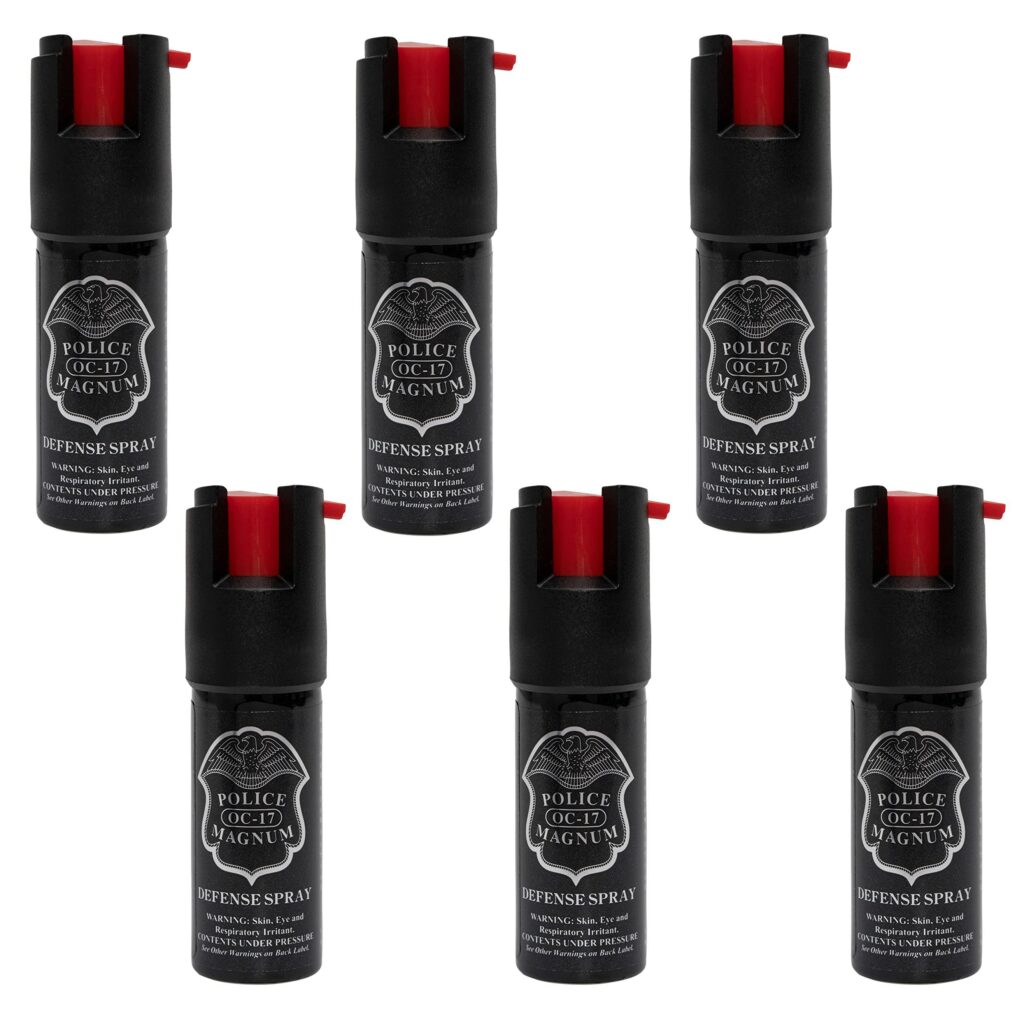Table of Contents
- Understanding the Chemical Composition and Mechanism of Action
- Comparing Effectiveness and Safety in Self-Defense Situations
- Legal Considerations and Usage Restrictions Across Regions
- Choosing the Right Option Based on Personal Needs and Environment
- Final Thoughts
Understanding the Chemical Composition and Mechanism of Action
The chemical backbone of pepper spray primarily revolves around oleoresin capsicum (OC), an oily resin extracted from hot chili peppers. This compound is responsible for the intense burning sensation and inflammation it causes upon contact with mucous membranes, eyes, and skin. When deployed, the spray rapidly induces temporary blindness, severe coughing, and disorientation by overwhelming sensory receptors and activating pain neurons. This immediate physiological response effectively incapacitates an assailant, providing crucial moments for escape or defense.
On the other hand, CO2 projectile sprayers rely on a mechanical delivery system that utilizes compressed carbon dioxide gas to propel substances toward a target. The projectiles themselves can contain a variety of payloads, such as irritants or marking dyes, but the gas does not directly cause chemical irritation. Instead, the effect depends largely on the contents of the projectile. The CO2 mechanism provides a controlled and forceful delivery, often resulting in:
- Targeted impact without widespread dispersion
- Reduced chemical exposure to bystanders
- Potential for precise marking in law enforcement scenarios
Comparing Effectiveness and Safety in Self-Defense Situations
When it comes to self-defense, both pepper spray and CO2 projectile sprayers offer unique advantages, but their effectiveness can vary depending on the situation. Pepper spray delivers an immediate and intense sensory irritation effect to the attacker’s eyes, nose, and respiratory system, causing temporary blindness, coughing, and disorientation. This rapid incapacitation is crucial in close-quarters confrontations where quick reaction time is essential. However, environmental factors such as wind or rain can reduce its reliability, and the spray’s range is typically limited to about 6-10 feet.
On the other hand, CO2 projectile sprayers use compressed gas to launch irritant capsules with greater accuracy and range, often extending up to 15 feet or more. This allows for a safer distance between the defender and the aggressor, reducing the risk of physical contact. The projectiles also reduce the potential for blowback, which can affect the user in windy conditions. Safety considerations differ as well – CO2 sprayers often require more training to use effectively and may pose additional risks if the projectiles physically strike unintended targets. When evaluating which option suits your needs, consider:
- Range and accuracy based on your typical environment
- Ease of use under stress and close encounters
- Potential for unintended exposure or injury
- Legal restrictions specific to your locality
Legal Considerations and Usage Restrictions Across Regions
When considering the use of pepper spray or CO2 projectile sprayers, understanding the legal landscape is crucial. Laws governing these self-defense tools vary significantly across states and countries, often reflecting local attitudes towards personal protection and public safety. For example, some regions classify pepper spray as a restricted chemical substance, allowing possession only for law enforcement personnel, while others permit limited civilian use with size and concentration limits. On the other hand, CO2 projectile sprayers-which deliver pepper or other irritants via a compressed gas mechanism-may fall under stricter firearm or weapon regulations in certain jurisdictions due to their projectile capabilities.
Users should also be aware of specific usage restrictions, such as prohibitions on carrying these devices in public spaces like schools, government buildings, or airports. When it comes to traveling, crossing borders with either pepper spray or CO2 sprayers can lead to severe penalties if local laws are not fully understood and respected. To navigate these complexities effectively, consulting local statutes or seeking legal advice before acquisition or use is highly recommended. Always ensure compliance with:
- Permitted concentrations and quantities
- Age requirements and licensing
- Authorized places for carrying and deploying
- Reporting or registration mandates where applicable
Choosing the Right Option Based on Personal Needs and Environment
When deciding between pepper spray and CO2 projectile sprayers, it’s essential to carefully assess your personal lifestyle and the environment in which you anticipate using the device. For individuals frequently navigating crowded urban spaces or enclosed areas, pepper spray’s quick dispersion and ease of use make it an effective tool for immediate deterrence without prolonged engagement. Its compact size and minimal recoil are perfect for close encounters, especially if quick accessibility and rapid defense are paramount.
On the other hand, if your environment includes open spaces such as parks or rural areas, or if you prefer maintaining distance during defense, CO2 projectile sprayers offer a clear advantage. These devices provide greater range and accuracy, allowing you to engage threats from several feet away. Plus, their ability to deliver controlled bursts can decrease the risk of affecting bystanders in less populated settings. When choosing, consider factors like portability, ease of reloading, and potential legal restrictions, which can vary significantly between regions. Ultimately, matching your choice to your specific needs ensures optimal safety and peace of mind.
Final Thoughts
In conclusion, understanding the key differences between pepper spray and CO2 projectile sprayers is essential for choosing the right personal defense tool to suit your needs. While pepper spray offers quick, direct contact for immediate deterrence, CO2 projectile sprayers provide the advantage of distance and reduced risk of blowback. Both have their unique benefits and limitations, so assessing your environment, comfort level, and legal considerations will help you make an informed decision. Stay safe and empowered by selecting the method that best aligns with your personal security requirements.Check Our Other Blogs
- StunGun – Your Trusted Source for Stun Guns, Laws, and Self-Defense Tips
- PepperSprayLaws – Your Trusted Resource for Pepper Spray Information
- StunGunLaws – Your Trusted Guide to Stun Gun Legality and Safety




